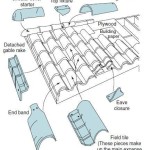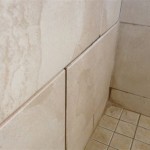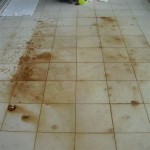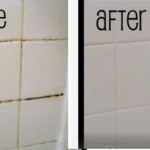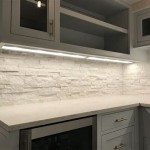Can You Tile Over Asbestos Linoleum Flooring In Georgia, USA? A Comprehensive Guide
The question of whether one can tile over asbestos linoleum flooring is a complex one, fraught with legal, health, and practical considerations, particularly within the state of Georgia, USA. This article aims to provide a thorough exploration of the factors involved, offering guidance to homeowners and contractors grappling with this issue.
Asbestos, a naturally occurring mineral fiber, was widely used in building materials, including linoleum flooring, due to its fire-resistant and durable qualities. However, the health risks associated with asbestos exposure, primarily lung cancer, mesothelioma, and asbestosis, became increasingly apparent, leading to its eventual restriction in many applications. Older homes in Georgia, especially those built before the 1980s, are more likely to contain asbestos-containing materials (ACMs), including linoleum flooring and its associated mastic adhesive.
When considering a flooring renovation, encountering asbestos linoleum presents a challenging dilemma. Complete removal of the asbestos flooring is often the most straightforward solution for eliminating the risk of asbestos exposure. However, removal is a costly and highly regulated process. As an alternative, some homeowners and contractors contemplate tiling directly over the existing asbestos linoleum. While this option may appear more economical and less disruptive, it is crucial to understand the potential ramifications associated with this practice.
Understanding the Regulations and Legal Aspects in Georgia
Georgia, like many states, adheres to federal regulations established by the Environmental Protection Agency (EPA) and the Occupational Safety and Health Administration (OSHA) concerning asbestos. These regulations govern the handling, removal, and disposal of asbestos-containing materials to protect both the public and workers. Ignoring these regulations can result in significant fines and legal repercussions.
The Georgia Department of Natural Resources, Environmental Protection Division (EPD) is the primary state agency responsible for enforcing asbestos regulations. They oversee the licensing and certification of asbestos contractors, as well as the proper disposal of asbestos waste. Before undertaking any project involving potential asbestos disturbance, contacting the EPD for guidance on current regulations is strongly advised.
Tiling over asbestos linoleum might seem like a non-disturbance activity, but it can become a regulated activity if the process involves cutting, drilling, or otherwise manipulating the asbestos-containing material. For instance, securing the new tile might require drilling into the subfloor, potentially releasing asbestos fibers. Any activity that could release asbestos fibers into the air may trigger regulatory requirements for notification, containment, and worker protection. It is crucial to understand the specific regulations in place and to consult with qualified asbestos professionals before proceeding.
Homeowners need to disclose the presence of asbestos to potential buyers during a real estate transaction. Covering up the problem with new tile might create future legal problems if the asbestos is discovered later. A proactive approach involving proper identification and addressing of the asbestos issue can prevent potential liabilities down the road. This includes providing comprehensive documentation of any encapsulation or abatement measures taken.
Health Risks and Exposure Prevention
The primary concern regarding asbestos is the health risk associated with inhaling asbestos fibers. These fibers can become airborne during any activity that disturbs the asbestos-containing material, such as demolition, cutting, grinding, or even aggressive scrubbing. Once inhaled, asbestos fibers can lodge in the lungs, leading to the development of severe respiratory illnesses, including asbestosis, lung cancer, and mesothelioma. There is no known safe level of asbestos exposure, and the risk increases with the amount and duration of exposure.
Tiling over asbestos linoleum, while seemingly innocuous, can potentially disturb the asbestos if the existing flooring is cracked, damaged, or requires significant preparation before tiling. For example, if the linoleum is loose or uneven, attempts to level it or secure the new tile could release asbestos fibers. Similarly, drilling through the linoleum to secure the underlayment or tile can generate airborne asbestos.
If tiling over asbestos linoleum is considered, taking stringent precautions to minimize the risk of asbestos exposure is essential. This includes wetting the area down to suppress dust, using a HEPA-filtered vacuum to clean up debris, and wearing appropriate personal protective equipment (PPE), such as respirators and disposable coveralls. Implementing these control measures can significantly reduce the potential for asbestos exposure during the tiling process.
Prior to commencement of any work, having the linoleum professionally tested for asbestos is highly recommended. A qualified asbestos inspector can collect samples and analyze them in a certified laboratory to determine whether asbestos is present and its concentration. This information is crucial for making informed decisions about how to proceed safely and legally. Assuming the flooring does not contain asbestos without professional testing can be a risky endeavor.
Practical Considerations and Alternatives
Beyond the legal and health aspects, several practical considerations influence the decision to tile over asbestos linoleum. These include the condition of the existing flooring, the type of tile being installed, and the long-term durability of the installation.
If the existing asbestos linoleum is severely damaged, uneven, or compromised, tiling over it may not be a viable option. An unstable subfloor can lead to cracks and failures in the new tile installation. Preparing the surface properly to achieve a level and solid base for the new tile is essential. This might involve applying a self-leveling compound or other leveling materials, which could inadvertently disturb the asbestos.
The type of tile being used also influences the suitability of tiling over asbestos linoleum. Thicker, heavier tiles, such as porcelain or stone, require a more robust subfloor than thinner, lighter tiles, such as vinyl or peel-and-stick options. Ensuring that the existing subfloor can adequately support the weight and stress of the new tile is crucial for long-term durability.
Instead of tiling directly over asbestos linoleum, encapsulating the existing floor with an approved material can be a safer alternative. Encapsulation involves applying a sealant or coating that creates a barrier, preventing the release of asbestos fibers. However, the encapsulation material must be compatible with the existing flooring and the intended tile installation. Consultation with an asbestos professional is essential to determine the appropriate encapsulation method and materials.
Complete removal of the asbestos linoleum is inevitably the safest and most effective method for mitigating the risk of asbestos exposure. While removal can be costly and time-consuming, it eliminates the ongoing concern about potential asbestos disturbance. Engaging a licensed and experienced asbestos abatement contractor is essential for ensuring that the removal is conducted safely and in compliance with all applicable regulations. This includes proper containment, disposal of asbestos waste in an approved landfill, and air monitoring to verify that asbestos fibers have been successfully removed.
Another alternative is to install a floating floor system, such as laminate or luxury vinyl plank (LVP), over the asbestos linoleum. Floating floors do not require adhesive or fasteners directly attached to the subfloor, minimizing the risk of asbestos disturbance. However, this option is only suitable if the existing floor is relatively level and stable. Careful consideration should be given to the potential for future demolition of the floating floor, which could disturb the underlying asbestos. It's also important to consider the added overall height of the floor to ensure it doesn't create any issues with doors or transitions to other rooms.
When considering any of these options, engaging with several qualified professionals, including asbestos inspectors, abatement contractors, and flooring installers, is crucial. Obtain multiple quotes and compare the proposed methods, materials, and safety precautions. Verifying each professional's licensing and insurance is also important to ensure that they are qualified to perform the work safely and legally. A comprehensive assessment of the risks and benefits of each approach will help you make an informed decision that prioritizes safety and compliance.
In conclusion, the decision of whether to tile over asbestos linoleum in Georgia, USA, is a complex one that warrants careful consideration of legal, health, and practical factors. While tiling over the existing flooring may seem like a cost-effective solution, it carries potential risks that should be carefully weighed against the benefits. Consulting with qualified professionals, adhering to all applicable regulations, and prioritizing safety are essential for ensuring a successful and compliant flooring renovation project.

Can I Put A New Floor Over Asbestos Tiles Branch Environmental

Asbestos In Flooring Mesothelioma

Can You Lay Tile Over Linoleum Rubi Blog Usa

Asbestos Exposure In Flooring Floor Tiles Vinyl Sheets

Flooring That Can Be Installed Over Asbestos Tile

Asbestos Tiles Brands Uses Exposure

Why Remove Vinyl Asbestos Tile Encapsulate Safer And Er Duraamen

Why Remove Vinyl Asbestos Tile Encapsulate Safer And Er Duraamen

A Home And Asbestos What Are The Risks

Asbestos Floor Tiles What Does In Flooring Look Like
Related Posts

